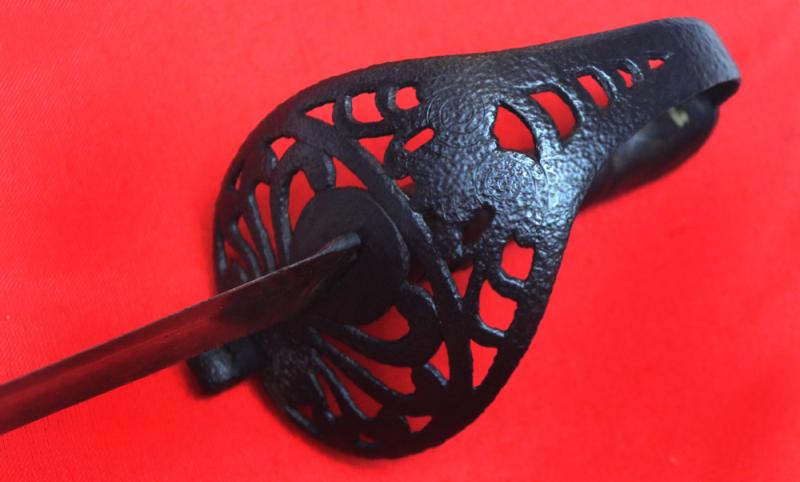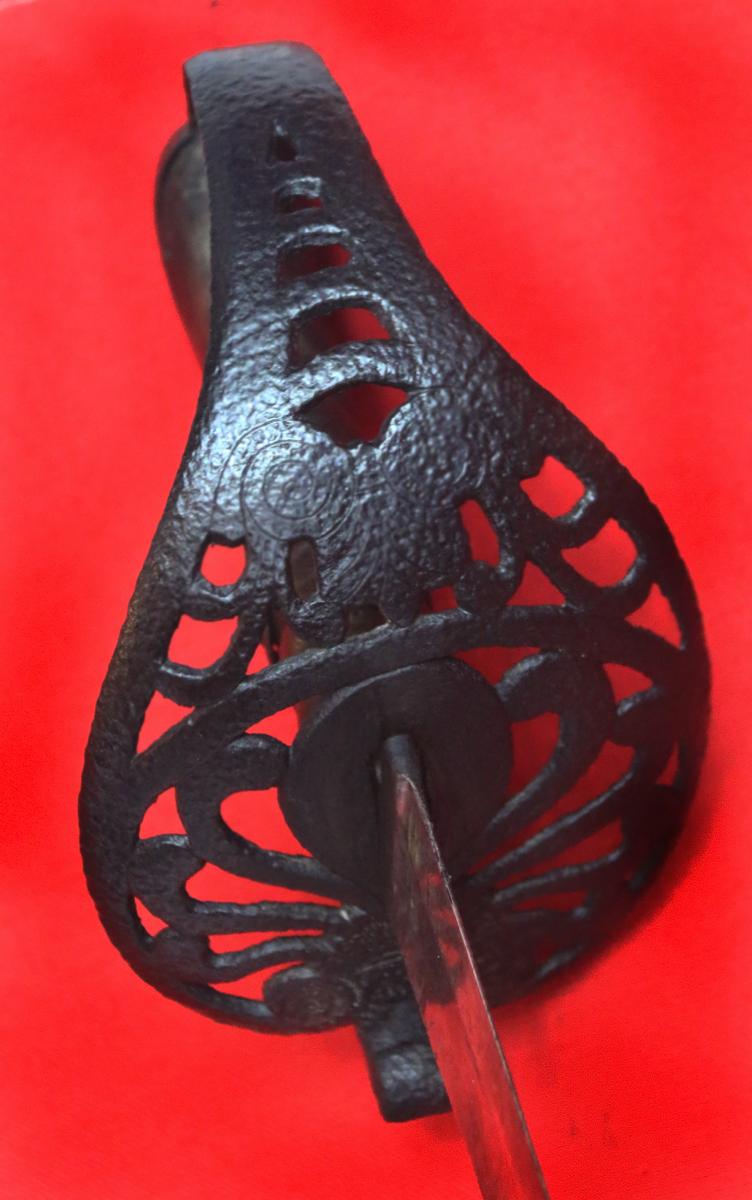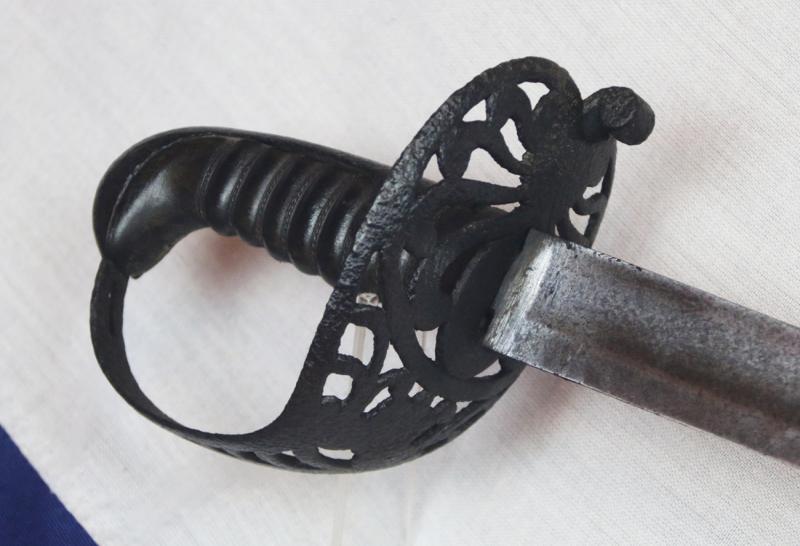'Charge of the Union Brigade'..A Rare & Highly Collectable 1796 Heavy Cavalry Officer's Combat 'Undress' Sword of the Union Brigade of Waterloo, with 'Ladder' Hilt and Hatchet Point Blade From The Cotton Collection
From the Waterloo museum collection, of weaponry and artefact removed from Waterloo.
Traditional and highly distinctive blackened iron 'ladder' hilt with honeysuckle scroll ornamentation, { now, well russetted } with the long, straight hatchet pointed blade in excellent condition for age. The grip is superb, with original wire binding present covering the original and perfect grip leather.
The Union Brigade comprised three regiments of British cavalry numbering no more than 1000 swords. The regiments were the First Dragoons (the “Royals”), the 2nd Dragoons (the Royal North British Dragoons or “Scots Greys”) and the 6th Dragoons (the “Inniskillings”). Only the Royals had recent battlefield experience having served in the Peninsular War, the Scots Greys and Inniskillings had last seen campaign service in 1794. The Brigade commander was Major General Sir William Ponsonby who was Wellington’s most experienced commander of heavy cavalry. The Brigade has been together for three weeks- the Royals joining the other two regiments on 27th May- and Sir William had done his best to train them up to the standard he expected.
The number of the French was so great that he did not have the luxury of keeping one regiment in reserve; so, all three regiments had to be deployed carefully. He ordered the Royals, his most experienced regiment, to deploy against the immediate threat of Bourgeois’ troops, the Inniskillings were then to deploy against Donzelot and Marcognet and finally his least experienced regiment the Scots Greys against the remainder of Marcognet’s troops. It was to be an attack en echelon.
The first clash took place on the crest itself. The Royals had to ride up hill so the impact would not have been from a gallop but from the sheer surprise and the weight of the horses. The front regiments of Bourgeois’ brigade managed to get off a volley which brought down 20 of the Royals. Two squadrons attacked Borgeois’ brigade and the French fell back down the slope pushed by the cavalry whose charge was gaining momentum as they rode downwards. Captain Clark had been engaged in fighting the enemy for 5 or 6 minutes when he spotted the eagle of the 105th de la ligne and with his troops captured it.
It was 2.45pm. In a space of 20 minutes the Union brigade had destroyed five French infantry brigades inflicting 5,000 casualties . Thousands of prisoners (at least 2,000) had been taken and were being shepherded to the rear of the battlefield by the relieved British infantry who 15 minutes earlier must have thought themselves beaten. In addition, thousands had been wounded and killed. A second eagle, that of the 45th de la ligne had been captured by Sergeant Ewart of the Scots Greys. Napoleon’s masterstroke to secure victory had been defeated and as Uxbridge wrote “When I was returning to our position I met the Duke of Wellington, surrounded by all the Corps diplomatique militaire, who had from the high ground witnessed the whole affair. The plain appeared to be swept clean, and I never saw so joyous a group as was this Troupe doree. They thought the battle was over.”
It is impossible to know the casualty figures sustained by the Union Brigade in its charge. Roll calls were made at the beginning of each day and the Union Brigade had to fight more during the day- the records of the Inniskillings record charging 5 more times during the day and sustaining casualties from French artillery when relocated to the right side of the Allied Sector But even if the casualty figures sustained on the 18th June of 49% were all due to the first charge it was a price well worth paying for the result it achieved.
From the Cotton Collection, a former 7th Hussars Waterloo veteran who owned the Waterloo Museum, The Hotel Du Musee
The last photo in the gallery shows a photograph of one section of the collection in the museum of Waterloo, taken in around 1900, showing all the weapons used at Waterloo en situ, including all the protagonists {British, French, Prussian and Belgian muskets, swords, pistols, armour uniforms, etc}. The museum was founded and owned by a veteran of the 7th Hussars that fought at Waterloo. He was able to collect weapons discarded at the battle site, and some even donated by other veterans, officers and men, that fought there. We have spent many years trying to trace items from this museum collection that were dissipated when it was sold by auction, by the family owners in the early 1900’s. Fortunately we have been able to do so happily with some degree of success this past year or so.
No scabbard
Code: 24950
1.00 GBP










